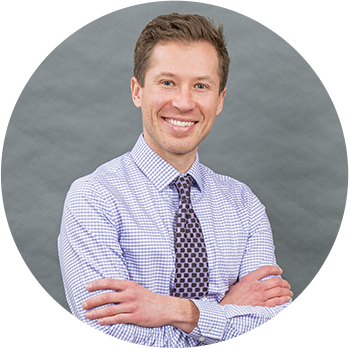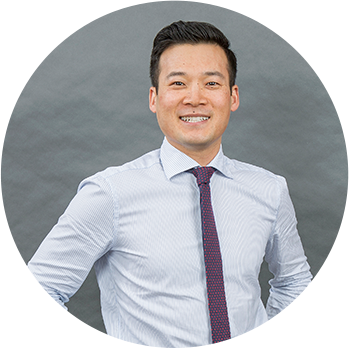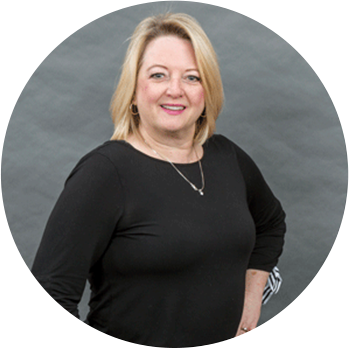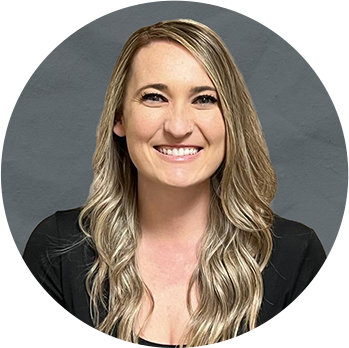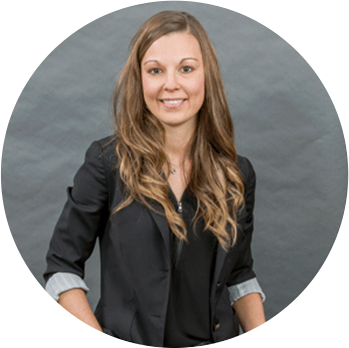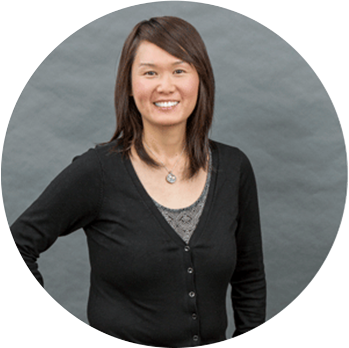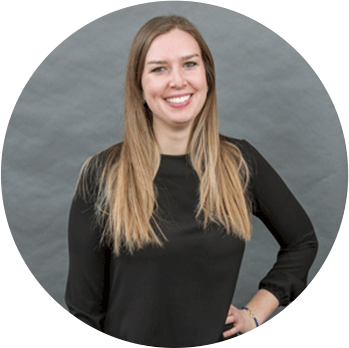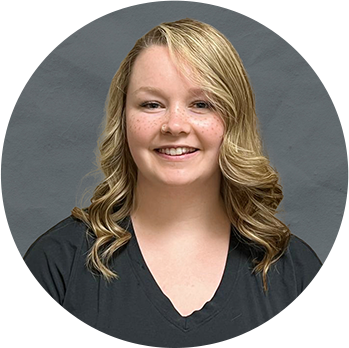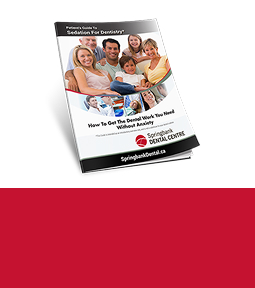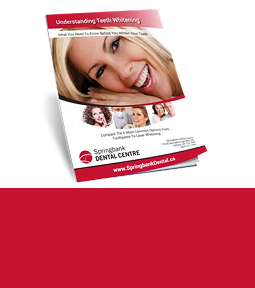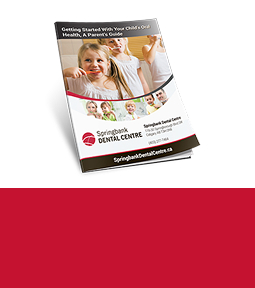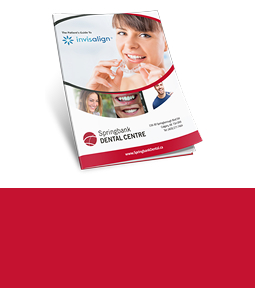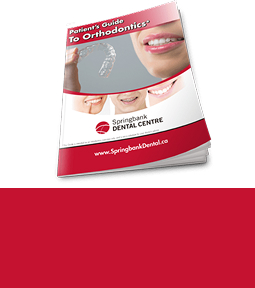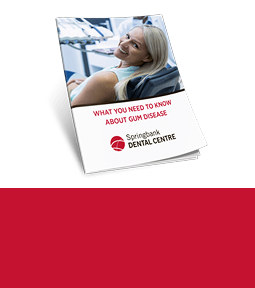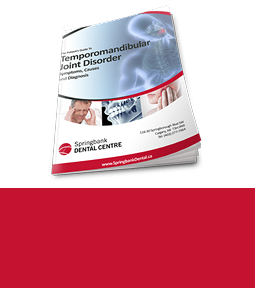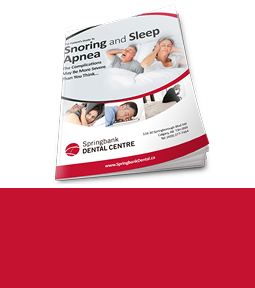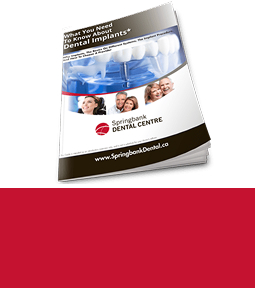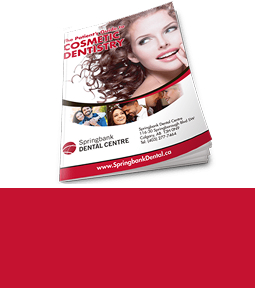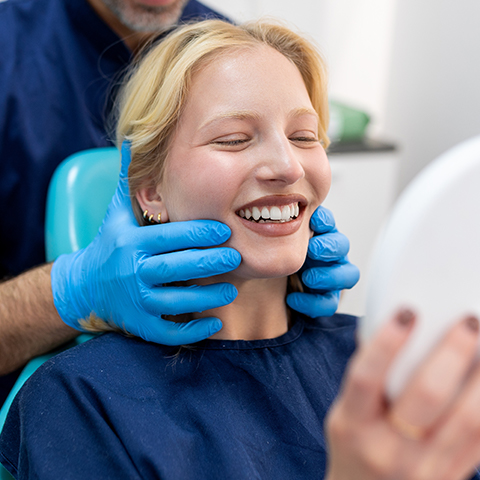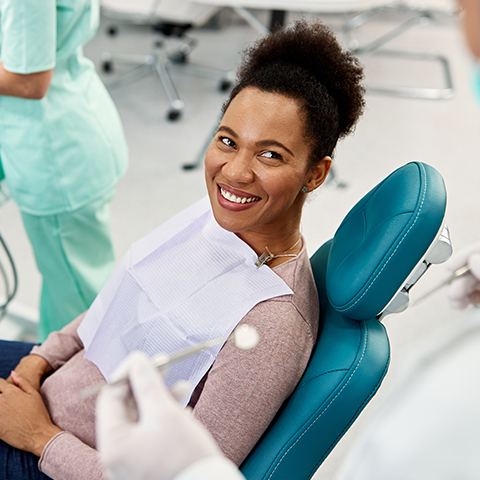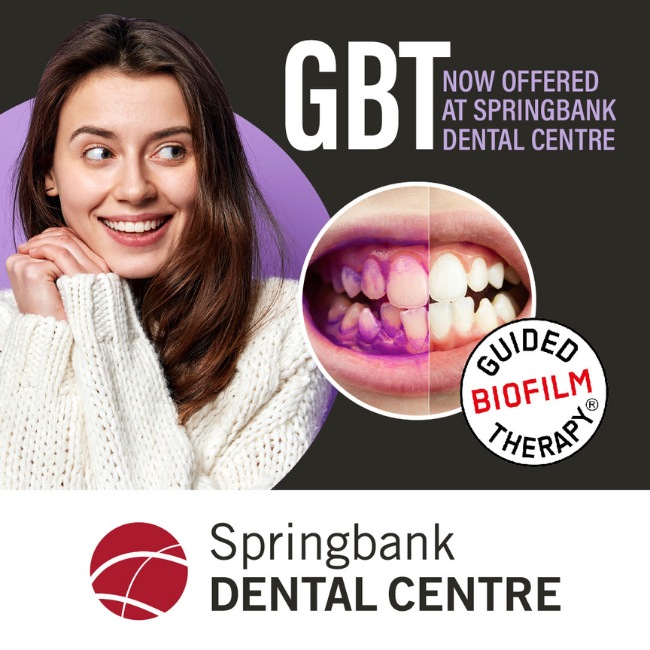Total Body Health Through Dental Science & Technology
At Springbank Dental Centre, we know a healthy smile contributes to a healthier you.
Your oral health is deeply connected to your overall well-being, and that’s why we take a thoughtful, whole-body approach to dental care. We focus on supporting your total health through preventative dental care, patient education, and truly listening to your needs.
Our commitment to excellence guides everything we do. We hold ourselves to the highest standards because we believe you and your family deserve the very best when it comes to your dental care. From friendly kids’ dental appointments and adult dental exams and cleanings, to Invisalign, same-day crowns, and in-house dental implants, we tailor our services to meet your unique needs.
We proudly serve the S.W. Calgary neighbourhoods of Aspen Woods, West Springbank, West Hills, Christie Park, Cougar Ridge, Patterson, Prominence Point, Coach Hill, Strathcona Park, Signature Park, Signal Hill, Richmond Hill, Discovery Ridge, and more. Our team members are fluent in English, Polish, and Cantonese.
Request AppointmentWe Offer Direct Billing for Dental Services
Yes! We offer direct billing to take the stress out of paying for dental care, saving you time and effort.
By accepting assignments, we work directly with your insurance provider, meaning you only pay for what isn’t covered. This way, you can focus on your smile while we handle the paperwork.
We also accept appointments under the Canadian Dental Care Plan (CDCP).
Our Technology
We pride ourselves on keeping our dental technology relevant and updated to serve you well. Here are some of the many technological tools we use:
- Drill-Free Laser Dentistry: With our laser, we can provide fillings without freezing because it’s more gentle, and other lasers for treatment of soft tissue, such as cold sores and other surgical procedures, with less bleeding and faster healing.
- Guided Biofilm Therapy: This innovative cleaning treatment comes standard in your hygiene appointment. It uses powerful, yet gentle, cleaning tools to remove biofilm and calculus from the surface of your teeth.
- Same-Day CEREC Crowns: Our in-office CEREC technology allows us to create custom crowns in a single appointment, avoiding the need for temporary crowns and a follow-up appointment
- Invisalign: Invisalign is your answer to straight, beautiful teeth without the need for metal braces and wires.
- Digital X-Rays: Digital X-rays are instantly visible to you and your dentist and reduce radiation by 80–90% compared to traditional dental X-rays.
- Intraoral Scanning: With the intraoral scanner, we can show you exactly what we see so you know what is being treated and why, before treatment starts. It allows us to track recession and wear over time and document and monitor cracks, chips, and discolouration, too.
- 3D Imaging (CBCT): CBCT or Cone Beam Computed Tomography is a scanning technology providing a 3D image of your mouth and jaw. The CBCT gives us the data we need and helps us visualize things not visible on regular X-rays to make decisions for implants and more.
- Velscope: The Velscope can detect cancerous tissue before it is visible to the naked eye, and can be used as part of your dental exam.
- Conscious Sedation: Conscious sedation can help people with dental anxiety feel more comfortable during certain procedures. Both Dr. Luke Szott and Dr. Joey Woo are certified by the Dental Organization for Conscious Sedation (DOCS).
Why Choose Kois-Trained Dentists
Dr. Luke Szott and Dr. Joey Woo are both graduates of the Kois Center, a dental education centre focusing on excellence in dentistry through science.
Kois-trained dentists are deeply passionate about helping patients. They’re driven to understand and provide what you want.
The training at the Kois Center teaches dentists how to diagnose and treat complex cases in a conservative and predictable way.
Learn more in this video.
Meet Our Team
Frequently Asked Questions
Do you offer direct billing?
Yes, we offer direct billing for your convenience.
How often should I brush and floss?
Brushing and flossing help control the plaque and bacteria that cause dental disease.
Plaque is a film of food debris, bacteria, and saliva that sticks to the teeth and gums. The bacteria in plaque convert certain food particles into acids that cause tooth decay. Also, if plaque is not removed, it turns into calculus (tartar). If plaque and calculus are not removed, they begin to destroy the gums and bone, causing periodontal (gum) disease.
Plaque formation and growth is continuous and can only be controlled by regular brushing, flossing, and the use of other dental aids.
Toothbrushing: Brush your teeth at least twice a day (especially before going to bed at night) with a dentist-approved soft bristle brush and toothpaste.
-
- Brush at a 45-degree angle to the gums, gently using a small, circular motion, ensuring that you always feel the bristles on the gums.
-
- Brush the outer, inner, and biting surfaces of each tooth.
-
- Use the tip of the brush head to clean the inside front teeth.
-
- Brush your tongue to remove bacteria and freshen your breath.
We recommend electric toothbrushes. They’re easy to use and can remove plaque efficiently. Simply place the bristles of the electric brush on your gums and teeth and allow the brush to do its job, several teeth at a time.
Flossing: Daily flossing is the best way to clean between the teeth and under the gumline. Flossing not only helps clean these spaces, but it also disrupts plaque colonies from building up, preventing damage to the gums, teeth, and bone.
-
- Take 12-16 inches (30-40cm) of dental floss and wrap it around your middle fingers, leaving about 2 inches (5cm) of floss between the hands.
-
- Using your thumbs and forefingers to guide the floss, gently insert the floss between teeth using a sawing motion.
-
- Curve the floss into a “C” shape around each tooth and under the gumline. Gently move the floss up and down, cleaning the side of each tooth.
Use floss holders if you have difficulty using conventional floss.
Rinsing: It’s important to rinse your mouth with water after brushing, and also after meals if you are unable to brush. If you are using an over-the-counter product for rinsing, it’s a good idea to consult with your dentist or dental hygienist on its appropriateness for you.
Why is it important to use dental floss?
Brushing our teeth removes food particles, plaque, and bacteria from all tooth surfaces, except in between the teeth. Unfortunately, our toothbrush can’t reach these areas that are highly susceptible to decay and periodontal (gum) disease.
Daily flossing is the best way to clean between the teeth and under the gumline. Flossing not only helps clean these spaces, it disrupts plaque colonies from building up, preventing damage to the gums, teeth, and bone.
Plaque is a sticky, almost invisible film that forms on the teeth. It is a growing colony of living bacteria, food debris, and saliva. The bacteria produce toxins (acids) that cause cavities and irritate and inflame the gums.
Also, when plaque is not removed above and below the gumline, it hardens and turns into calculus (tartar). This will further irritate and inflame the gums and also slowly destroy the bone. This is the beginning of periodontal disease.
What should I do if I have bad breath?
There are various reasons one may have bad breath, but in healthy people, the major reason is due to microbial deposits on the tongue, especially the back of the tongue. Some studies have shown that simply brushing the tongue reduced bad breath by as much as 70%.
What may cause bad breath?
Sleeping: Saliva flow almost stops during sleep and its reduced cleansing action allows bacteria to grow, causing bad breath.
Certain foods: Garlic, onions, etc. Foods containing odor-causing compounds enter the bloodstream; they are transferred to the lungs, where they are exhaled.
Poor oral hygiene habits: Food particles remaining in the mouth promote bacterial growth.
Periodontal (gum) disease: Colonies of bacteria and food debris residing under inflamed gums.
Dental cavities and improperly fitted dental appliances: May also contribute to bad breath.
Dry mouth (Xerostomia): May be caused by certain medications, salivary gland problems, or continuous mouth breathing.
Tobacco products: Dry the mouth, causing bad breath.
Dieting: Certain chemicals called ketones are released in the breath as the body burns fat.
Dehydration, hunger, and missed meals: Drinking water and chewing food increases saliva flow and washes bacteria away.
Certain medical conditions and illnesses: Diabetes, liver and kidney problems, chronic sinus infections, bronchitis, and pneumonia are several conditions that may contribute to bad breath.
Keeping a record of what you eat may help identify the cause of bad breath. Also, review your current medications, recent surgeries, or illnesses with your dentist.
What can I do to prevent bad breath?
Practice good oral hygiene: Brush at least twice a day with an dentist-approved fluoride toothpaste and toothbrush.
Floss daily to remove food debris and plaque from in between the teeth and under the gumline.
Brush or use a tongue scraper to clean the tongue and reach the back areas. Replace your toothbrush every 2 to 3 months.
If you wear dentures or removable bridges, clean them thoroughly and place them back in your mouth in the morning.
See your dentist regularly: Get a check-up and cleaning at least twice a year. If you have or have had periodontal disease, your dentist may recommend more frequent visits.
Stop smoking/chewing tobacco: Ask your dentist what they recommend to help break the habit.
Drink water frequently: Water will help keep your mouth moist and wash away bacteria.
Use mouthwash/rinses: Some over-the-counter products only provide a temporary solution to mask unpleasant mouth odor. Ask your dentist about antiseptic rinses that not only alleviate bad breath but also kill the germs that cause the problem.
In most cases, your dentist can treat the cause of bad breath. If it is determined that your mouth is healthy, but bad breath is persistent, your dentist may refer you to your physician to determine the cause of the odor and an appropriate treatment plan.
How often should I have a dental exam and cleaning?
You should typically have your teeth checked and cleaned at least twice a year, though your dentist or dental hygienist may recommend more frequent visits.
Regular dental exams and cleaning visits are essential in preventing dental problems and maintaining the health of your teeth and gums. At these visits, your teeth are cleaned and checked for cavities. Additionally, there are many other things that are checked and monitored to help detect, prevent, and maintain your dental health.
These include:
Medical history review: Knowing the status of any current medical conditions, new medications, and illnesses, gives us insight into your overall health and also your dental health.
Examination of diagnostic x-rays (radiographs): Essential for detection of decay, tumours, cysts, and bone loss. Digital X-rays also help determine tooth and root positions.
Oral cancer screening: Check the face, neck, lips, tongue, throat, tissues, and gums for any signs of oral cancer.
Gum disease evaluation: Check the gums and bone around the teeth for any signs of periodontal disease.
Examination of tooth decay: All tooth surfaces will be checked for decay with special dental instruments.
Examination of existing restorations: Check current fillings, crowns, etc.
Removal of calculus (tartar): Calculus is hardened plaque that has been left on the tooth for some time and is now firmly attached to the tooth surface. Calculus forms above and below the gum line, and can only be removed with special dental instruments.
Removal of plaque: Plaque is a sticky, almost invisible film that forms on the teeth. It is a growing colony of living bacteria, food debris, and saliva. The bacteria produce toxins (poisons) that inflame the gums. This inflammation is the start of periodontal disease!
Teeth polishing: Removes stain and plaque that is not otherwise removed during toothbrushing and scaling.
Oral hygiene recommendations: Review and recommend oral hygiene aids as needed (electric dental toothbrushes, special cleaning aids, fluorides, rinses, etc.).
Review dietary habits: Your eating habits play a very important role in your dental health.
What can I do about stained or discoloured teeth?
Professional teeth whitening (or bleaching) is a simple, noninvasive dental treatment used to change the colour of natural tooth enamel, and is an ideal way to enhance the beauty of your smile.
What are porcelain veneers and how can they improve my smile?
Porcelain veneers are very thin shells of tooth-shaped porcelain that are individually crafted to cover the fronts of teeth. They are very durable and will not stain, making them a very popular solution for those seeking to restore or enhance the beauty of their smile. Veneers may be used to restore or correct the following dental conditions:
-
- Severely discoloured or stained teeth
-
- Unwanted or uneven spaces
-
- Worn or chipped teeth
-
- Slight tooth crowding
-
- Misshapen teeth
-
- Teeth that are too small or large
How can cosmetic dentistry help improve the appearance of my smile?
Cosmetic dentistry is focused on straightening, whitening, or otherwise adjusting the look of your smile. Our cosmetic dentistry services include:
How can I tell if I have gingivitis or periodontitis (gum disease)?
4 out of 5 people have periodontal disease and don’t know it! Most people are not aware of it because the disease is usually painless in the early stages.
Unlike tooth decay, which often causes discomfort, it is possible to have periodontal disease without noticeable symptoms. Having regular dental checkups and periodontal examinations are very important and will help detect if periodontal problems exist.
Signs and symptoms of periodontal disease include:
-
- Red, swollen gums
-
- Bleeding gums
-
- Persistent bad breath
-
- New spacing between teeth
-
- Loose teeth
-
- Pus around the teeth and gums
-
- Receding gums
-
- Tenderness or Discomfort
Good oral hygiene, a balanced diet, and regular dental visits can help reduce your risk of developing periodontal disease.
How much radiation do I get from a dental x-ray?
If you’ve ever wondered why your dentist draped you in a lead apron and all of their staff step out of the room each time you need a dental X-ray, it’s normal to have some concern about the safety of the procedure.
Fortunately, getting dental X-rays today is extremely safe… and the only reason why your dental team stays far away is because of the risk of gradual exposure that accumulates day after day throughout their career.
Otherwise, dental X-rays are usually nothing to be concerned about!
Digital X-Rays Use Lower Amounts of Radiation
A digital X-ray requires less radiation to capture a high-resolution image than the traditional X-rays used a few decades ago. Depending on the type of film, equipment, and image being taken, it may be as much as a 90% reduction in exposure!
Compared to not getting dental X-rays, the tiny amount of radiation exposure is an important trade-off. Diagnostic imaging allows dentists to see inside and around the tooth structures where pathology (such as bone loss, oral cancer, or tooth decay) commonly lurk.
Diagnosing them as early as possible allows for less-invasive and more cost-effective treatments. Otherwise, such problems can’t be detected until they’ve reached an advanced state that requires more aggressive therapies to manage.
Why is a lead apron really necessary?
Radiology and health experts follow the rule of ALARA, or “as low as reasonably achievable.” This means limiting the risk of scatter radiation to staff and patents.
While scatter radiation is minimal, it cannot perforate lead. As such, lead aprons are used to shield tissues that are most sensitive to radiation, including the thyroid gland and reproductive organs. While the risk is extremely low, the apron essentially prevents radiation exposure to other parts of the body that are of greater concern.
If you have questions about dental X-rays or how often imaging is necessary to keep your smile healthy, be sure to speak with your dentist.
Imagine What Your Next Dental Appointment Could Be Like
Your smile deserves personalized, thoughtful care that puts your needs first. We’re here to support your dental health every step of the way, not just for today but for a lifetime of confident, healthy smiles. Trust us to be your partner in achieving lasting oral wellness.
Request AppointmentPlan Ahead with Our Free Patient Guides
Looking to learn more before your visit? Click the link below to access and download our free patient guides. They are packed with helpful information about what to expect, our approach to care, and how to make the most of your appointment at Springbank Dental Centre.
How to Find Us
We’re located in the Springborough Professional Building on Springborough Blvd. S.W. just off of 69th Street S.W., near the Westside Recreation Centre. We are adjacent to the Ambrose University Campus, Rundle College, Ernest Manning High School, and the 69 Street West LRT station.
No need to pay at the parking kiosk if you’re driving. Just provide us with your license plate number, and we’ll take care of free parking.

Our Address
- Unit 116, 30 Springborough Blvd. S.W.
- Calgary, AB T3H 0N9
Contact Information
- Phone: 403-277-7464
- Email: [email protected]
Our Hours
Hours
- Monday: 8:00 AM – 4:00 PM
- Tuesday: 8:00 AM – 7:00 PM
- Wednesday: 8:00 AM – 7:00 PM
- Thursday: 8:00 AM – 5:00 PM
- Friday: 7:00 AM – 2:00 PM
- Saturday: Closed
- Sunday: Closed
How Your Oral Health & Overall Health Are Connected
Your oral health is a vital part of your overall well-being. Research shows that conditions like gum disease are linked to over 50 broader health issues, including heart disease, diabetes, and even pregnancy complications.
Taking care of your teeth and gums isn’t just about a beautiful smile—it’s about supporting your entire body’s health.
Regular dental visits and a consistent care routine can help prevent potential problems and keep you feeling well. By prioritizing your oral health, you’re making an investment in a lifetime of wellness.


